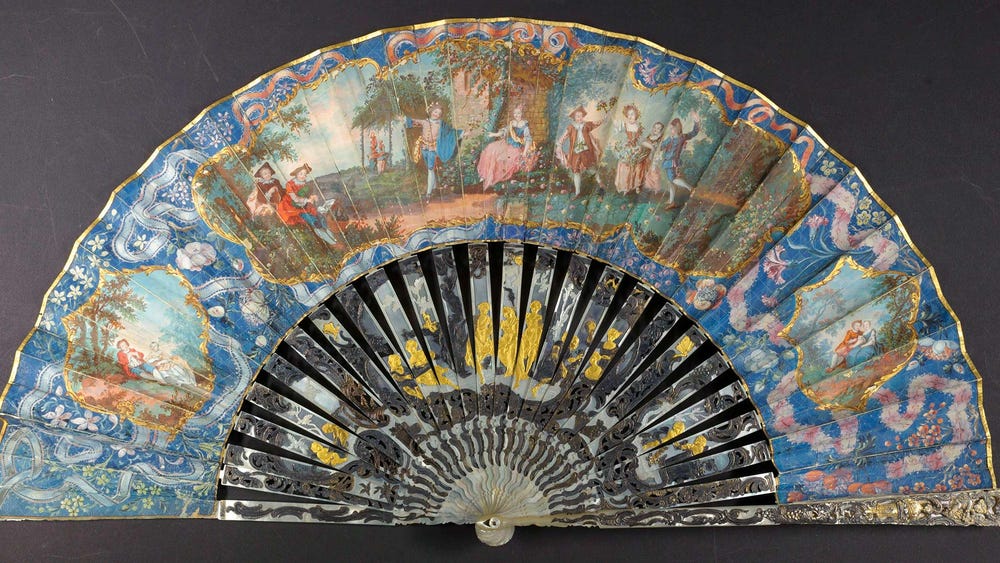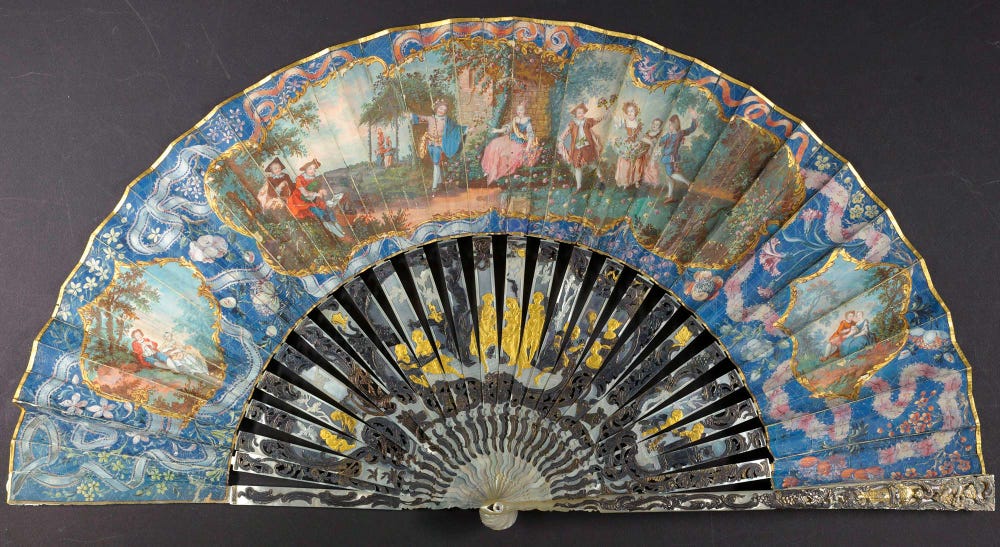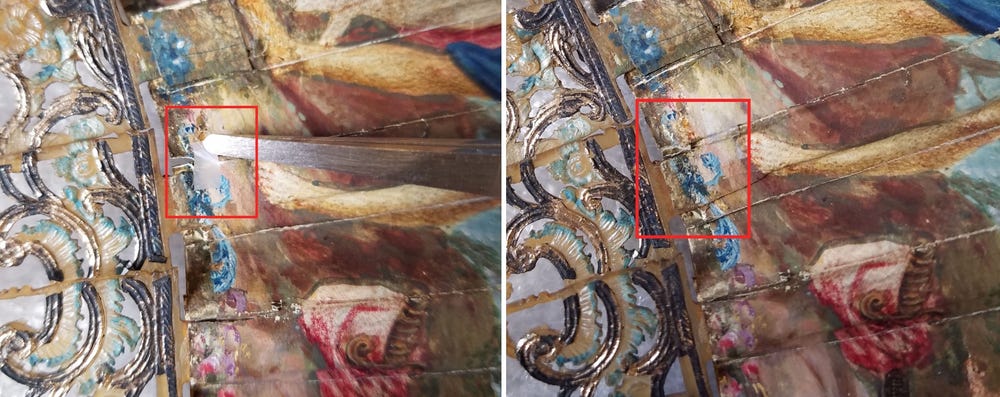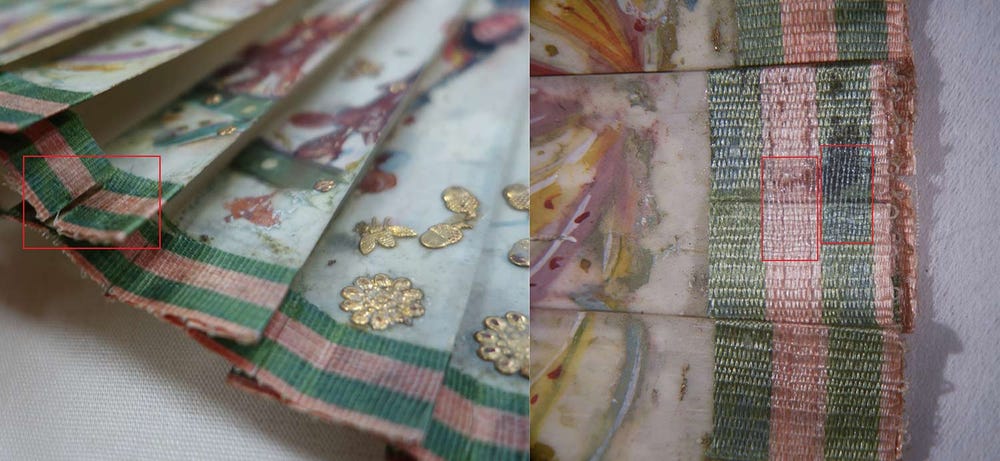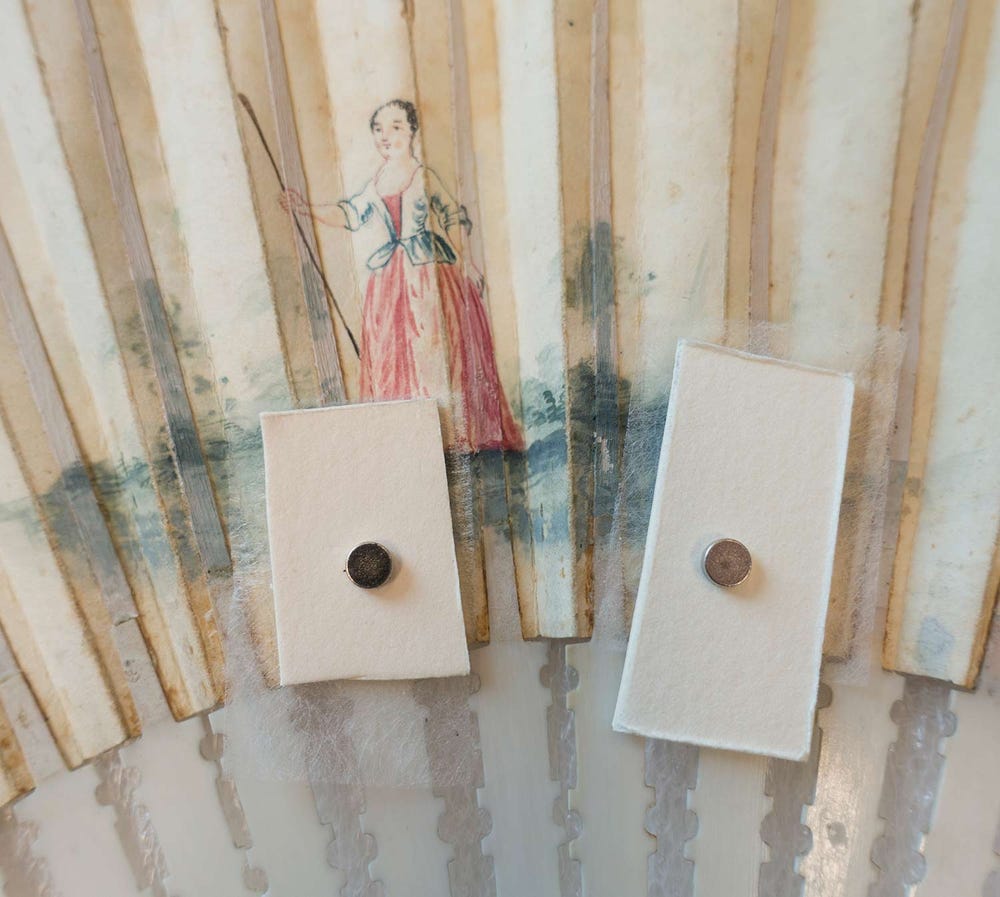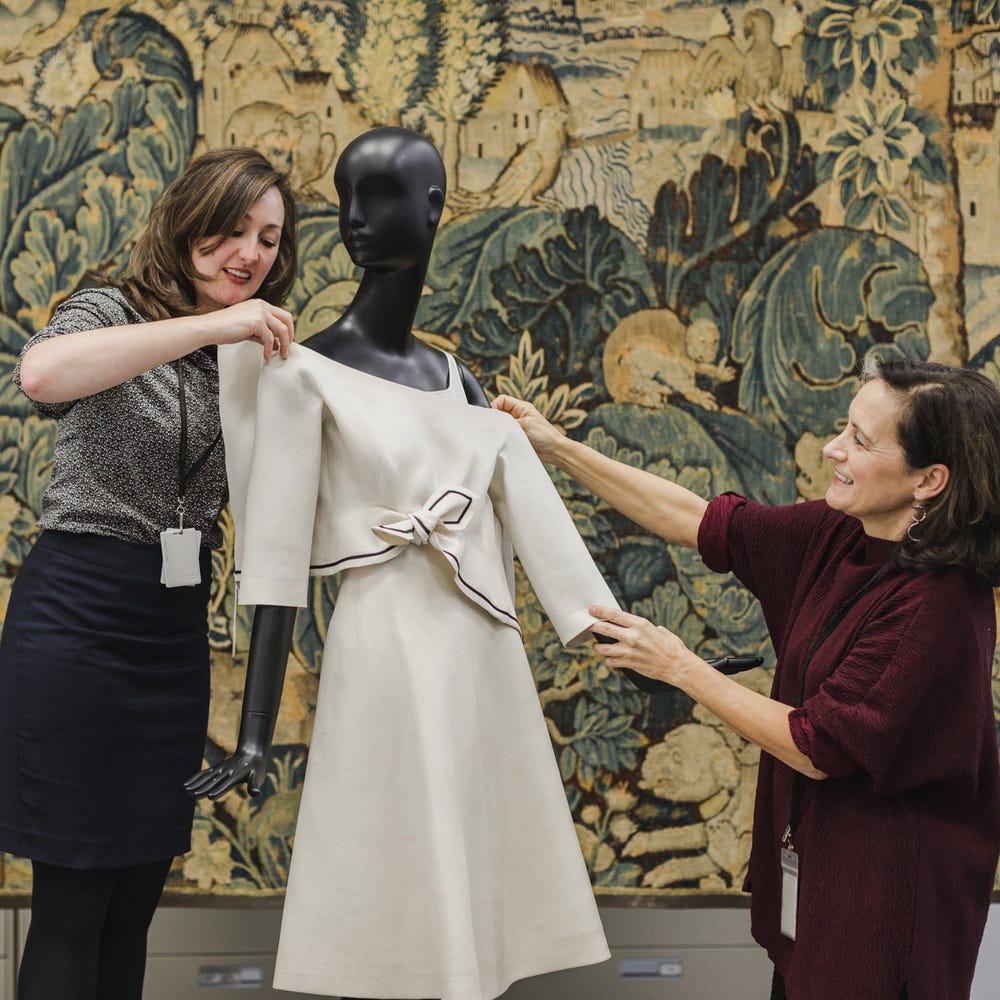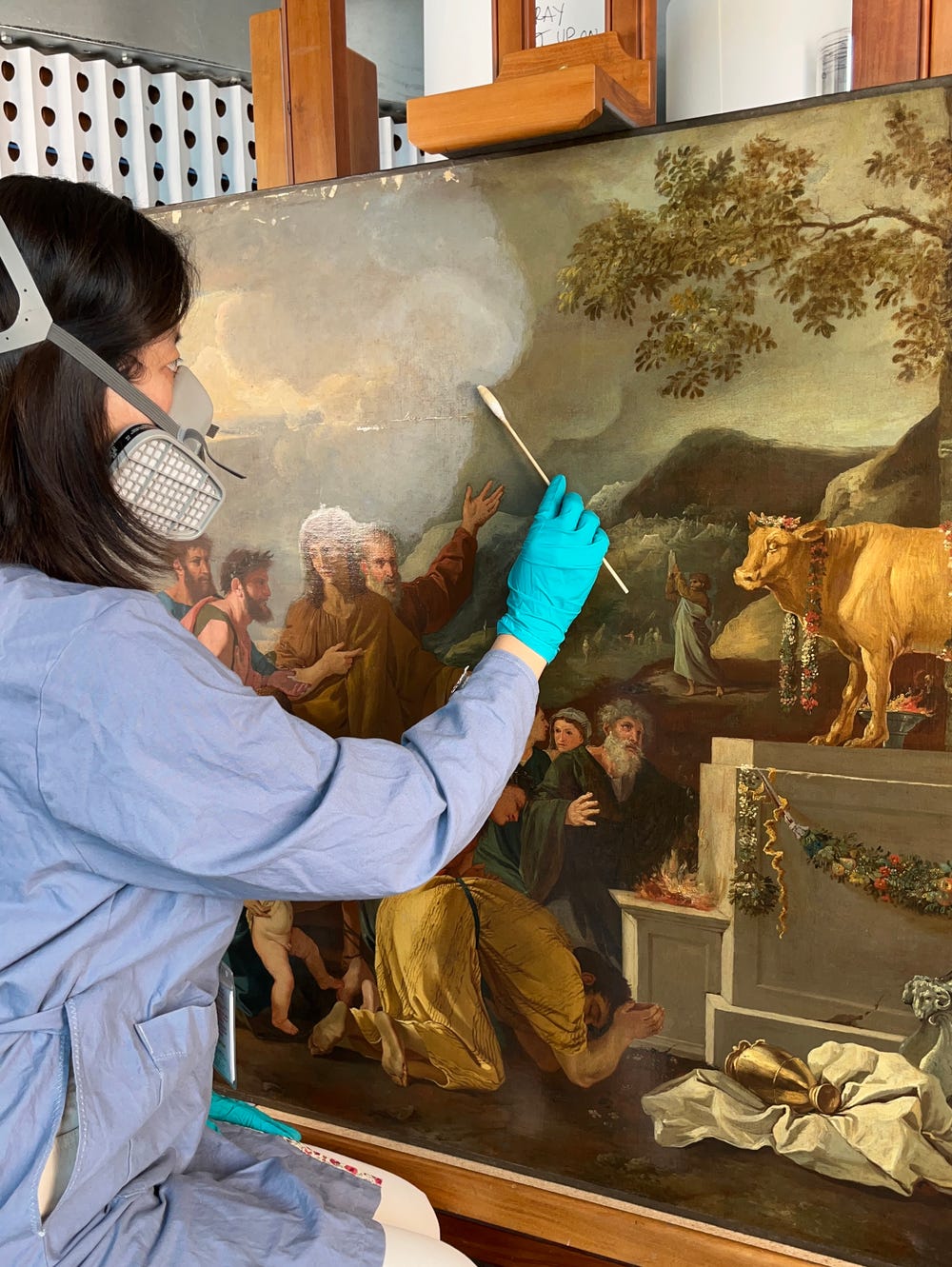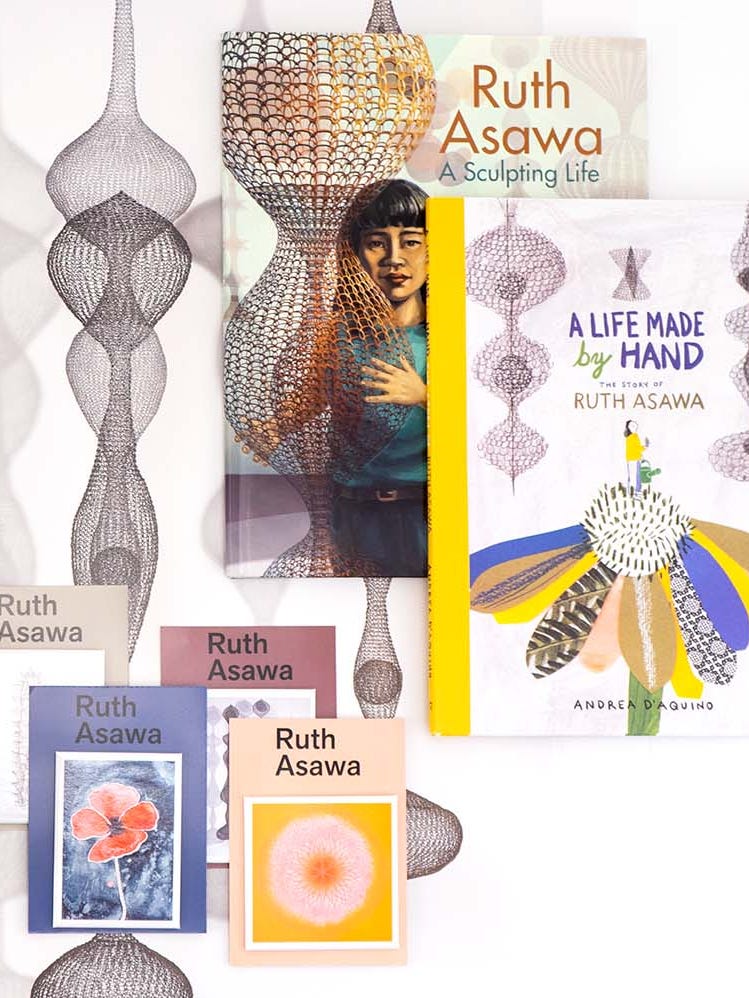On the Mend: Repairing Breaks in Eighteenth-Century Fans
By Anisha Gupta, Anne Getts, and Colleen O’Shea
September 3, 2018
“Country Dance” fan, ca. 1760, Germany. Leaf of paper with opaque watercolor and gold paint; sticks and guards of carved and incised mother-of-pearl with applied silver and gilt silver foil; and iron rivet. Fine Arts Museums of San Francisco, Gift of Mrs. Reginald Rives, 1978.10.3
In the eighteenth century, women in European society used fans as dynamic objects to convey emotions, flick away suitors, and keep themselves cool. As such, fans were repeatedly folded and unfolded, causing their materials to tear and break. To stabilize the fans in preparation for the exhibition Fans of the Eighteenth Century, on view at de Young through April 2019, art conservators from three of the Museums’ conservation labs had to come up with creative and clever ways to delicately repair their tears and breaks.
Fans from this time were made from and decorated with a variety of materials that evolved over the course of the century. The Museums’ paper conservators treated the fans that were made of paper or parchment; the textile conservators worked on the ribbons and fans with silk leaves; and the objects conservators addressed the fans’ sticks, often made from ivory or bone, as well as their decorative elements, frequently made of mother-of-pearl. To learn more about the construction of the fans in the exhibition, check out the blog post Fashioning Fans, by Associate Curator of Costume and Textile Arts Laura Camerlengo.
“Country Dance” fan, ca. 1760, Germany. Leaf of paper with opaque watercolor and gold paint; sticks and guards of carved and incised mother-of-pearl with applied silver and gilt silver foil; and iron rivet. Fine Arts Museums of San Francisco, Gift of Mrs. Reginald Rives, 1978.10.3
Paper
When paper conservators mend two-dimensional objects like prints and drawings, they usually use an opaque Japanese paper on the back side of the works. By mending on the reverse, they are able to avoid obscuring the image area with the repair paper. But fans are three-dimensional and angular; they don’t lie flat on the table. They usually comprise two sheets of paper — a top sheet with decoration and a (typically) unadorned back paper — as well as the sticks, which are sandwiched between the two sheets. Because of the fans’ construction, the reverse side of the top sheet is inaccessible. This means mends must be done on the front of the fan, on top of the design.
When repairing the fans in Fans of the Eighteenth Century, paper conservators turned to a brand-new repair material called Nanopaper, a completely transparent paper that allowed mending directly on top of the design without obscuring it. The repairs are invisible!
Left: Nanopaper is applied with tweezers as a mend to the tear; right: The repaired mend is completely invisible!
Textiles
Consisting solely of rigid sticks that are secured at their tops by a ribbon or cord, Brisé fans have no paper or textile leaf. Because the ribbon controls these fans’ opening and closing, it tends to develop splits along the natural crease lines that form when the fan is folded. Two of the brisé fans in this exhibition had ribbons that were splitting and broken in multiple places.
To stabilize these tears, textile conservators used adhesive-impregnated silk crepeline to bridge the splits. The mends were applied to the reverse of the ribbon whenever possible and activated with heat, though in some instances the mends had to be applied to the front. Because silk crepeline is a semi-transparent fabric, the repairs are unobtrusive (though unfortunately not invisible, as they are with the Nanopaper!).
Left: Example of damage to ribbon, which is splitting along a crease line; right: Magnified view of the silk crepeline repair patches that were used to bridge the split in the ribbon.
Objects
Nestled amid a fan’s paper or fabric leaf, the sticks, ribs, and guards create a crucial support structure. It is the sticks and guards that a hand holds when it waves or folds a fan. When a break occurs in these sections, a fan’s stability is weakened.
For this exhibition, objects conservators repaired breaks in sticks made from ivory, bone, and mother-of-pearl. They faced three main challenges: each stick was extremely thin, which meant there was a very small surface area along each break edge; bone, ivory, and mother-of-pearl are relatively translucent, so the repair material and adhesive needed to be of similar translucency; these areas are flexed and folded when the fans are handled and required a repair strong enough to withstand these movements.
To solve these challenges, objects conservators adhered together several layers of either Nanopaper or Japanese tissue to form a final structure that was strong yet still semi-transparent. The laminated Nanopaper or Japanese tissue was adhered to the back of the broken area, acting as a small bridge between the two sections. In the case of a severely warped stick, bridges on both the front and the back of the stick help to hold the stick in place. Small rare-earth magnets were used to clamp the repairs in place while the adhesive dried.
Small rare-earth magnets on the front and back of the repair serve as clamps.
These fans’ varied materials, unique structures, and distinct challenges offered the Museums’ conservators an opportunity to devise creative ways to mend tears and breaks while preserving the fans’ functionality (i.e., their ability to be open and closed). As you go through the exhibition, look closely and see if you can spot any of these tricky repairs!
Text by Anisha Gupta, Andrew W. Mellon Fellow in Paper Conservation; Anne Getts, associate conservator of Costume & Textile Arts; and Colleen O’Shea, Andrew W. Mellon Fellow in Objects Conservation.
